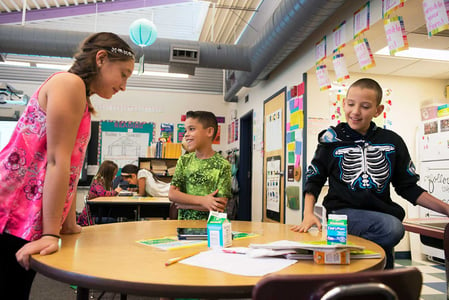
When the Elementary and Secondary Education Act was reauthorized in December 2015, Teachstone joined with others working across grade levels to celebrate the new law—the Every Student Succeeds Act (ESSA). ESSA allows and emboldens states to build seamless systems that recognize and incorporate early childhood education in a pre-K to 12 system.
We spoke of the ways we can “bridge the gap” between early learning and the K-12 worlds; encouraging the use of the CLASS tools across age levels to ensure common language and understanding of teacher-child interactions. Each tool explains how interactions must change over time to accomodate different age levels—from a cooing baby all the way up to a defiant teenager. Anyone surprised to hear I have a 14, 16, and 18 year old in my home?
Changing Guidance
Over a year after the overwhelming bipartisan passage of ESSA, and with a new Administration and a new Congress, some changes in implementation have occurred. Most of the ESSA guidance has remained the same. However, there are a couple of key changes that concern stakeholder engagement and school improvement.
- Stakeholder engagement: Under the original guidance from the Obama Administration, states were required to engage in timely and meaningful consultation with stakeholders in developing their state plan. The stakeholders also had to reflect the geographic diversity of the state. Under the new guidance from the Trump Administration, states may reach out to stakeholders, but they are not required to do so.
- School improvement: Under Obama, states had to explain how they were distributing resources for school improvement. Under Trump, fewer specifics are required in the state plans for school improvement.
Staying the Course
Of course, much has stayed the same. Many of the important details were included in the law itself and are not subject to new guidance, such as the definition of professional development as sustained, intensive, collaborative, job-embedded, data-driven, and classroom-focused. Coaching, anyone?
Under ESSA, school districts are responsible for developing agreements with Head Start programs to coordinate services, including: data reporting and sharing, alignment of standards and curricula, and transition activities for children moving from Head Start into public school programs. Transition activities might include sharing assessment data, promoting summer learning programs, engaging families, and implementing joint professional development opportunities that involve both community-based providers and school staff.
We have great reason to hope that the spirit of partnering will pervade the new state plans. It has been integral to the success of many of our early childhood programs who have relied on it to create a “system” from the patchwork of programs and funding streams. Partnering is just one of the many ways in which the K-12 world can benefit from the inclusion of early childhood in their state plans.
Likewise, we hope that the early childhood field’s deep belief in the need for developmentally appropriate child assessments pervades states’ plans, at least for young children, and that they are used to inform and improve teachers’ practice.
Looking Ahead
States will be rolling out their plans under two deadlines, April 3, 2017, and September 18, 2017. Look here for a list of each state’s submission date, and please let us know what support you need as you review and provide feedback on your state's plans.
This summer, when we know more about states’ plans and have some highlights to share, please join my colleague, Rebecca Berlin, for her webinar, “How CLASS Supports Teachers & Children: Transitions, ESSA, & Beyond.” You’ll learn more about how to align across the age levels and how to ensure the focus on critical teacher-student interactions is included in your state.

